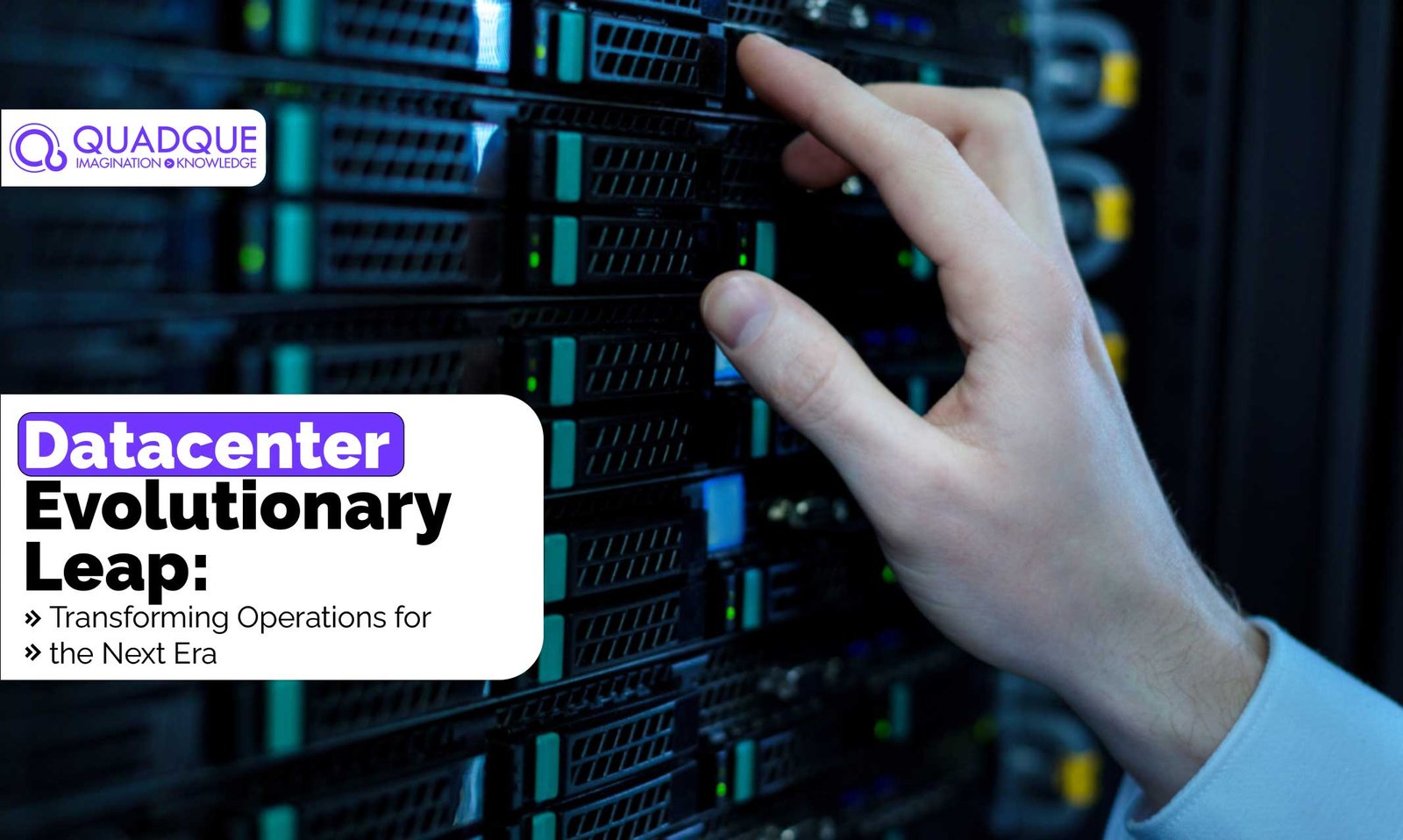
Revolutionizing Datacenter Evolutionary Operations for the Next Era
In the ever-evolving landscape of technology, datacenters stand at the forefront of innovation, driving the digital transformation of businesses worldwide. The journey towards the next era of datacenter operations is marked by a revolutionary leap, propelled by cutting-edge technologies and paradigm shifts in infrastructure management. In this comprehensive guide, we delve into the transformative journey of datacenters, exploring the pivotal role of automation solutions, AI-driven optimization, and edge-to-cloud integration in shaping the future of datacenter operations.
- Automation Solutions: Streamlining Efficiency and Reliability
Automation lies at the heart of modern datacenter operations, enabling organizations to streamline processes, minimize human error, and enhance operational efficiency. Through the deployment of automation solutions, routine tasks such as provisioning, configuration management, and resource allocation can be performed seamlessly, allowing IT teams to focus on strategic initiatives. For example, automated workload balancing ensures optimal resource utilization, while self-healing systems proactively identify and remediate potential issues before they impact performance.
- AI-Driven Optimization: Unleashing the Power of Machine Learning
AI-driven optimization represents a paradigm shift in datacenter management, leveraging machine learning algorithms to analyze vast amounts of data and optimize infrastructure performance. By continuously monitoring workloads, resource usage, and environmental conditions, AI-powered systems can dynamically adjust configurations to meet changing demands, maximizing efficiency and minimizing costs. For instance, predictive analytics algorithms forecast future resource requirements based on historical data, enabling proactive capacity planning and optimization.
- Edge-to-Cloud Integration: Bridging the Divide
The proliferation of edge computing has transformed the way data is processed, stored, and analyzed, necessitating seamless integration between edge devices and centralized datacenters. Edge-to-cloud integration enables organizations to leverage the scalability and resilience of cloud infrastructure while harnessing the low latency and data processing capabilities of edge devices. By distributing workloads intelligently across edge and cloud environments, businesses can achieve optimal performance and responsiveness for mission-critical applications.
- IoT Connectivity: Enabling the Internet of Things
The Internet of Things (IoT) represents a vast ecosystem of interconnected devices, sensors, and actuators, generating unprecedented volumes of data that must be processed and analyzed in real-time. Datacenters play a central role in IoT connectivity, serving as the backbone for collecting, storing, and analyzing IoT data streams. Advanced datacenter architectures incorporate edge computing capabilities to reduce latency and bandwidth requirements, enabling real-time insights and actionable intelligence for IoT applications.
- 5G Networks: Unlocking Unprecedented Speed and Connectivity
The rollout of 5G networks promises to revolutionize datacenter operations, delivering unparalleled speed, reliability, and connectivity for next-generation applications and services. By harnessing the power of 5G networks, datacenters can support bandwidth-intensive workloads, such as augmented reality (AR), virtual reality (VR), and high-definition video streaming, with minimal latency and jitter. Edge computing platforms leverage 5G connectivity to offload processing tasks closer to the point of data generation, ensuring real-time responsiveness and immersive user experiences.
- Hybrid Cloud Solutions: Balancing Flexibility and Control
Hybrid cloud solutions offer the best of both worlds, combining the scalability and agility of public cloud services with the control and security of private infrastructure. Datacenter evolution involves embracing hybrid cloud architectures to seamlessly integrate on-premises resources with off-site cloud platforms, enabling dynamic workload migration and resource optimization. Containerization technologies such as Docker and Kubernetes facilitate portability and orchestration across hybrid cloud environments, ensuring consistency and reliability across diverse infrastructure deployments.
- Containerization Technologies: Embracing Modular Architectures
Containerization technologies such as Docker and Kubernetes have revolutionized the way applications are developed, deployed, and managed in datacenter environments. By encapsulating applications and their dependencies into lightweight, portable containers, containerization enables rapid deployment, scalability, and resource isolation. Microservices architecture further enhances agility and resilience, allowing applications to be broken down into modular components that can be independently developed, deployed, and scaled.
- Digital Twins: Modeling Real-World Systems
Digital twins represent virtual replicas of physical assets, processes, or systems, enabling organizations to simulate and optimize real-world scenarios in a virtual environment. In the context of datacenter operations, digital twins provide a powerful tool for predictive maintenance, capacity planning, and performance optimization. By creating digital twins of datacenter infrastructure components, organizations can simulate different scenarios, identify potential bottlenecks, and optimize resource allocation to maximize efficiency and reliability.
- Augmented Reality (AR) and Virtual Reality (VR) Simulation: Immersive Training and Visualization
Augmented reality (AR) and virtual reality (VR) technologies are transforming the way datacenter operators visualize and interact with complex systems. AR overlays contextual information onto the physical environment, providing real-time insights and guidance for maintenance and troubleshooting tasks. VR simulation enables immersive training experiences, allowing operators to practice procedures and scenarios in a virtual environment before executing them in the real world. By leveraging AR and VR technologies, datacenter operators can enhance productivity, safety, and decision-making capabilities.
- Machine Learning Algorithms: Continuous Improvement through Data Insights
Machine learning algorithms play a pivotal role in the datacenter evolutionary leap, enabling continuous improvement through data-driven insights and predictive capabilities. By analyzing historical data and real-time metrics, machine learning algorithms can identify trends, anticipate future demand, and optimize resource allocation for maximum efficiency. From capacity planning to energy management and resource optimization, machine learning algorithms drive innovation and agility in datacenter operations.
- Microservices Architecture: Modular and Scalable Application Design
Microservices architecture is transforming how applications are designed, developed, and deployed within datacenter environments. By breaking down monolithic applications into smaller, independent services, organizations can achieve greater flexibility, scalability, and resilience. Microservices enable teams to develop, deploy, and update individual components independently, facilitating rapid innovation and iterative development cycles. From fault isolation and scalability to agility and maintainability, microservices architecture offers a modular and scalable approach to building modern applications.
Conclusion:
The evolutionary leap in datacenter operations heralds a new era of efficiency, agility, and innovation, driven by automation solutions, AI-driven optimization, and edge-to-cloud integration. By embracing emerging technologies such as IoT connectivity, 5G networks, and hybrid cloud solutions, organizations can unlock unprecedented opportunities for growth and differentiation in an increasingly competitive landscape. From containerization technologies to digital twins and AR/VR simulation, the future of datacenters is characterized by continuous innovation and adaptation to meet the evolving needs of businesses and consumers alike.
Recent Posts
- Sustainable Graphic Design for 2024 and Beyond
- Profit Power: Maximizing Revenue Growth with CRM Software
- Medical and Elderly Care in the UK: Strategies for Sustainable Growth
- Securing Educational Excellence: IT Support for the Digital Era
- Tech Transformation: The Untold Story of Bangladesh’s Innovation Hub
Recent Comments
Latest Post
Categories
- AI
- Biometric
- Blockchain
- Cloud Computing
- CRM
- custom software
- Cybersecurity
- Data Analysis
- Datacenter Management
- Designer
- Digital Marketing
- Education
- health care
- Informative
- ISP Management
- IT Procurement
- IT Recruitment
- IT Support
- Mobile App
- Network Management
- Robotics Landscape
- SAP ERP
- SEO
- Structured Cabling
- Tech Australia
- Tech bangladesh
- Technology
- tourism
- Uncategorized
- Web Development


